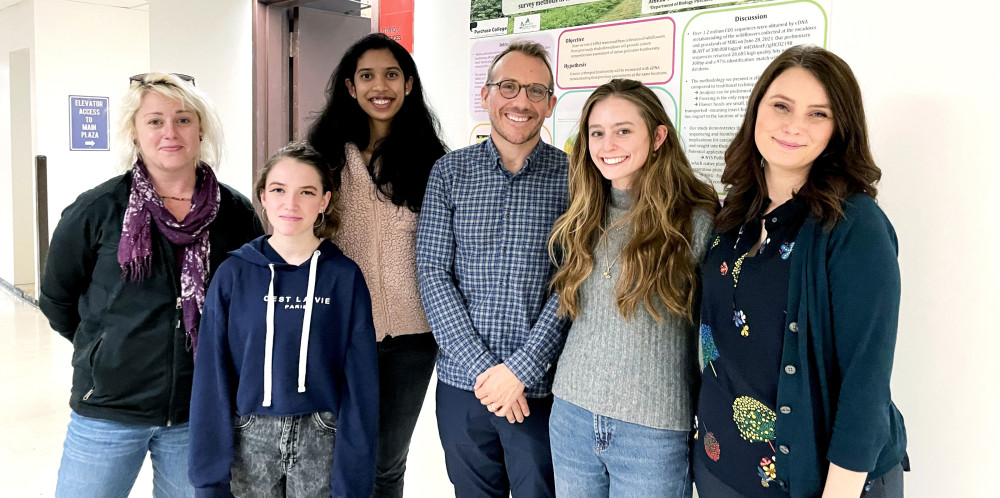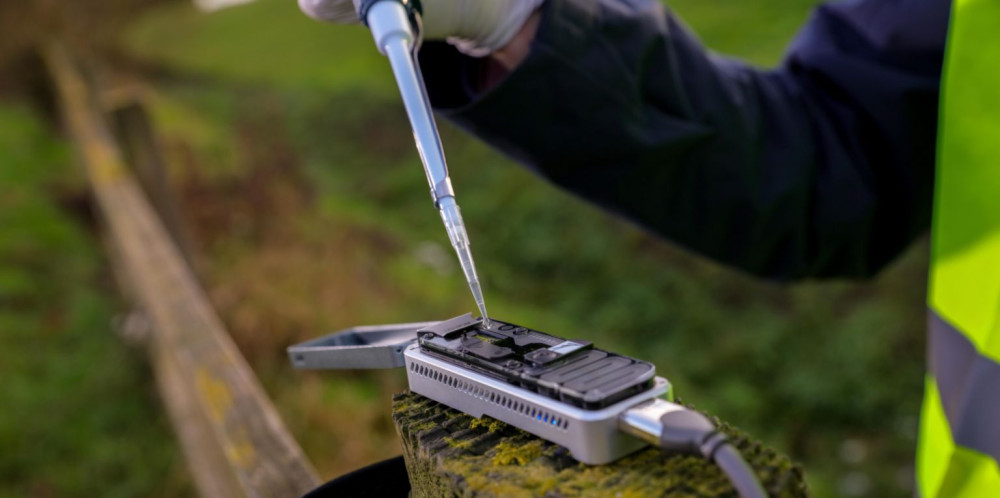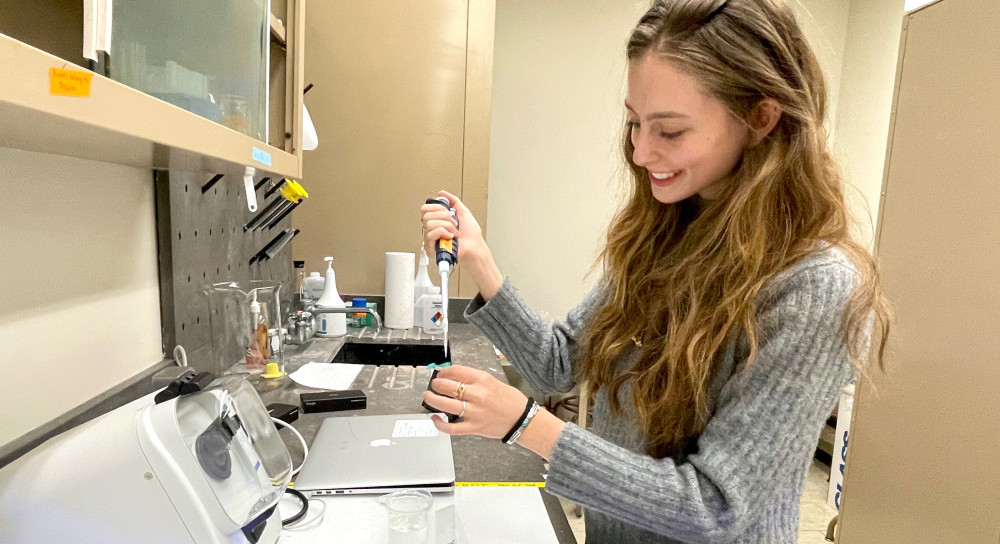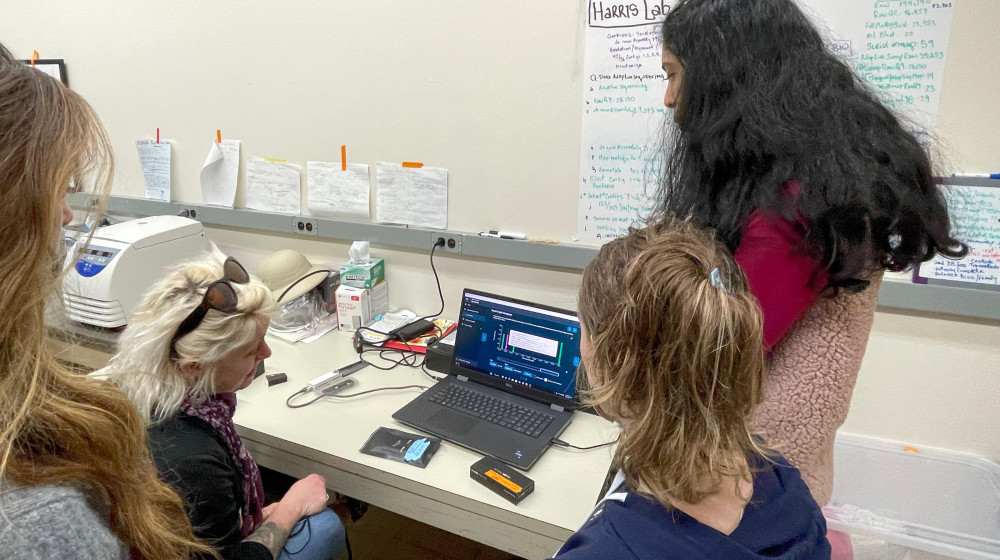Innovative Research Experience

Last summer, Assistant Professors of Biology Erika Ebbs and Stephen Harris learned they had been awarded a major grant of nearly $500,000 by the National Science Foundation to support their research on symbiotic communities.
The communities they’re investigating are the ones found inside eight different species of ducks that migrate along the Atlantic Flyway from Canada to Florida.
They’ll compare the symbionts—the organisms living within and dependent on the waterfowl for survival—and their host environments to examine the differences that allow parasites to survive and thrive in one species over another. Ebbs does not suspect it’s random.
Longer term, the research could help discover how the environment at large contributes to the spread of diseases, such as avian flu, and how to manage them in a more informed way. The impact of climate change not only causes an increase in water-borne, animal-to-human disease outbreaks, but it’s also responsible for the growth of new diseases.
Ebbs and her team will examine the ecological preferences of different North American waterfowl species, such as migratory patterns, food sources, and territorial behaviors, as they relate to the worms found inside the duck viscera.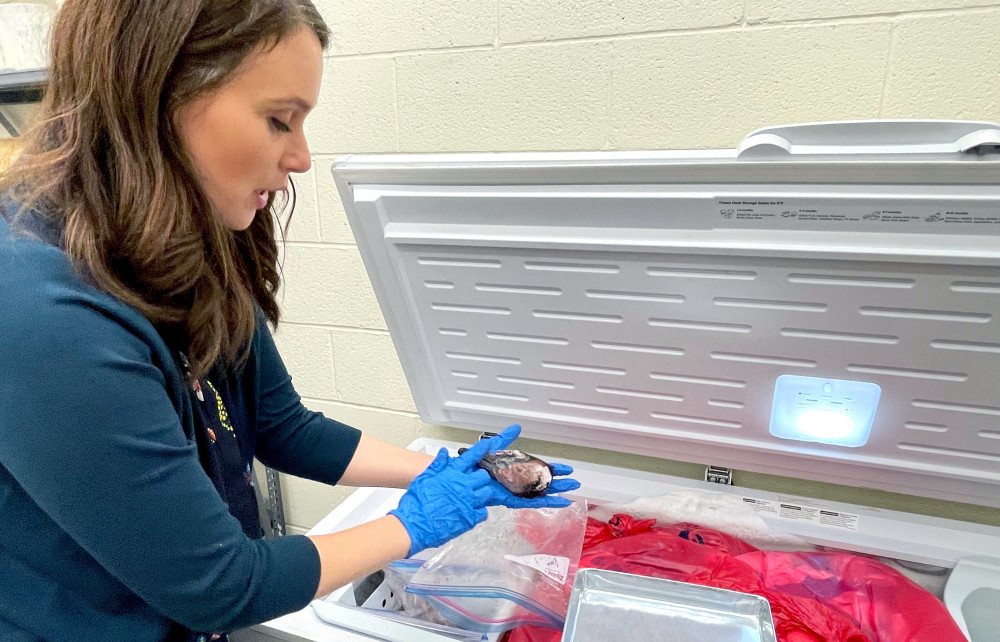
Experience the Cutting Edge
“We’re going to use really cutting-edge sequencing techniques…”
Because Purchase highly values the hands-on learning experience, particularly in the sciences, students will be able to sequence the DNA themselves. Determining the genetic sequencing of samples often takes place at a third-party lab. Not here. The biology lab was already equipped with one benchtop sequencer, and the grant allows for the purchase of a second, more powerful one.
“We’re going to use really cutting-edge sequencing techniques,” Ebbs says. “The students can go from getting the worm from the duck to identifying the sequences on their own, in-house. They can experience the whole process.”
This fall, Ebbs will work with student research assistants to develop the protocols for conducting the genetic sequencing, and next spring, it will become part of the lab experience in select biology courses.
This kind of work is unusual at the undergraduate level.
“We take the concept of experiential learning very much to heart in biology,” Ebbs explains. “The buzzword now is CURE, a course-based undergraduate research experience, as the best pedagogy. Most of our classes do that.”
Duck Donations
“Waterfowl hunters are amazing naturalists…”
So, where do the samples come from?
“All of our birds are coming from people who are legally permitted to hunt during hunting season,” Ebbs says.
It turns out that the duck-hunting community is highly engaged with the environment, climate change, and scientific study.
Most samples are sent in; however, Ebbs will sometimes venture into the field and wait on the docks for hunters to return.
“Waterfowl hunters are amazing naturalists in their own right,” she says. Because they’re on the front line, they’re often in tune with what’s happening in wetlands or threatened habitats. And they’re excited to play a role in the research. “They want to follow up with us and know what their ducks had. They ask amazing questions and want to keep participating.”
Novel Discoveries
“We’re finding things that are novel to science.”
One senior project currently underway involves the identification of a new worm found in a Canada goose. The data will then serve as the foundation for future projects.
Typically, once a genetic sequence is identified, the first resource to check is the NCBI (National Center for Biotechnology Information) database run by the National Institutes of Health. But the symbionts they’re finding are not widely studied model organisms, such as drosophila fruit flies or C. elegans worms, so there’s very little or even no data available.
“We’re finding things that are novel to science. And we’re trying to identify them based on their genetic data, but there’s nothing to compare it to,” Ebbs explains.
The students are compelled to make their own references.
“We’re hoping to fill in some of this unknown parasite viral diversity and create data sets that we can keep using and building on, hopefully for the rest of my career,” Ebbs says, laughing.
It’s All Connected…By Parasites
“…species that can be connected by these little unseen worms.”
Ebbs career as a full-time professor began at Purchase in the fall of 2020. A general biology course during her undergraduate study—at a school similar to Purchase for its small classes, great faculty-student interaction, and exposure to hands-on techniques in the lab—would be the catalyst for studying parasites. Their interconnectedness completely shifted her perspective.
“You can look at a bird and a snail and a frog, in different parts of the country, at different times of the year, and have no concept of how they could be related to each other.”
But it all made sense to her.
“One little worm could infect a waterfowl in Nova Scotia, and then a snail in Florida, and a fish or frog somewhere else. You have this huge disparate time and space and species that can be connected by these little unseen worms. That was mind-blowing.”
Ebbs exudes her enthusiasm for parasitology with her students, whom she finds to be highly engaged, empowered, and eager for research experience.
“It says a lot about this campus. I love that about Purchase.”
Assistant Professor of Biology Erika Ebbs and Assistant Professor of Biology Stephen Harris are co-principal investigators on the three-year National Science Foundation grant of $491,207 for “BRC-BIO–Expanding the ‘community’ in Community Genetics: Infracommunity genomics of duck symbionts to determine the eco-evolutionary factors underpinning holobiont evolution.”
—Kristi McKee
